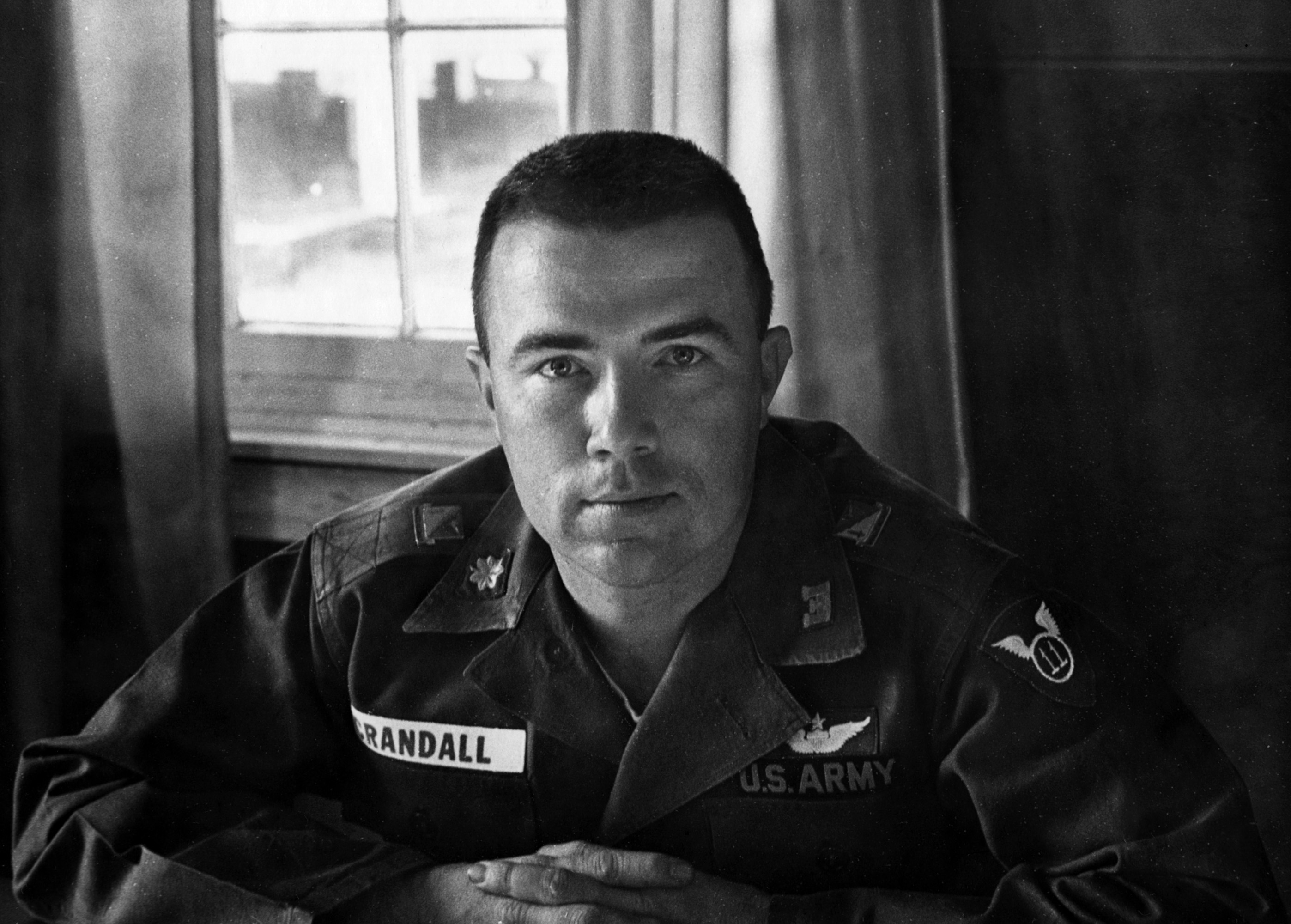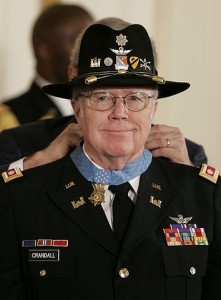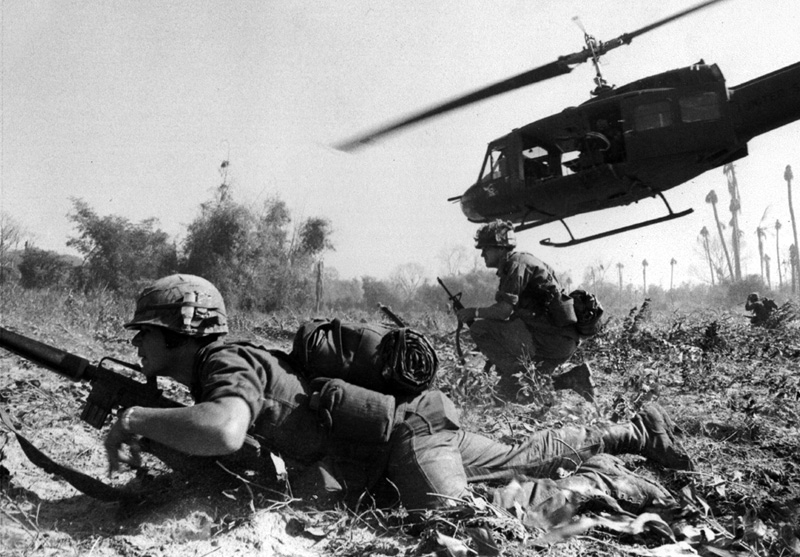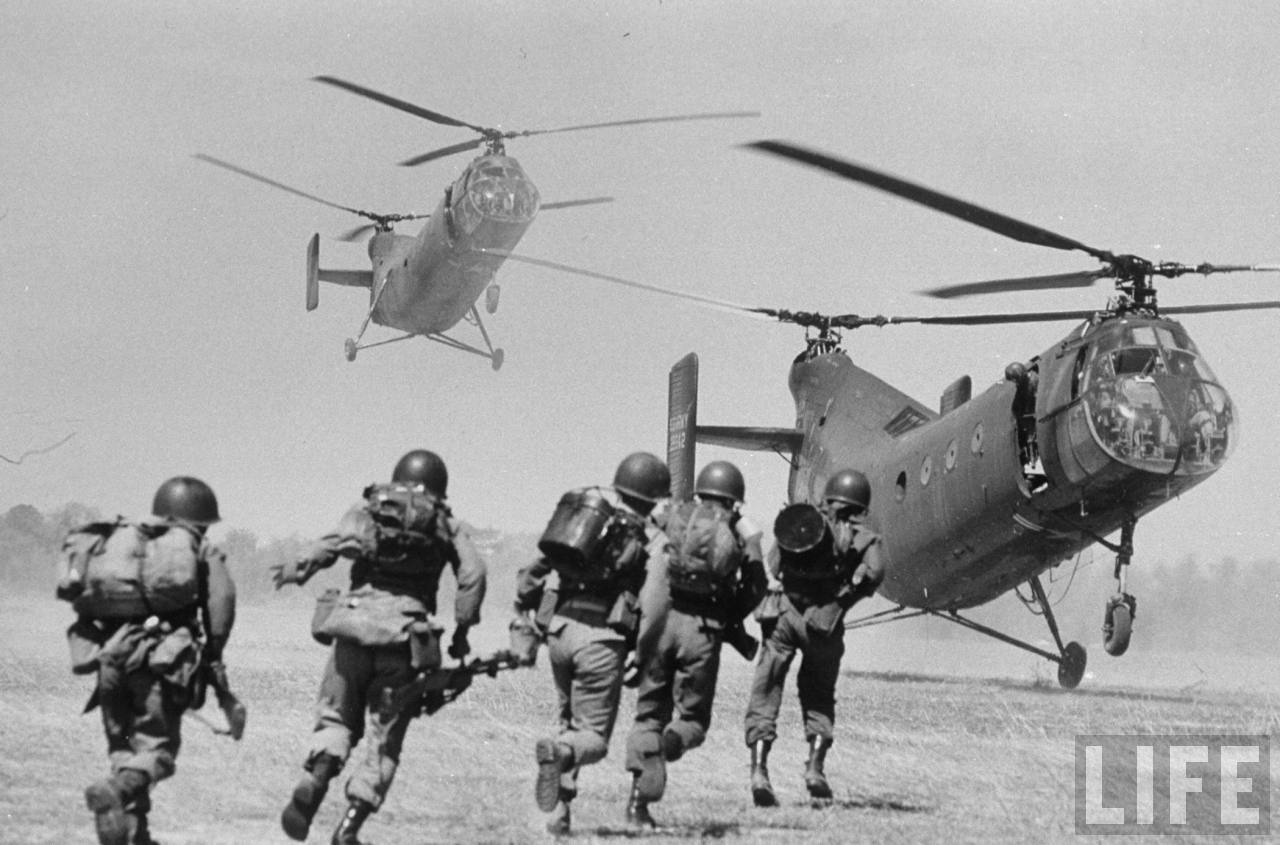
12 January 1962: The first helicopter assault of the Vietnam War, Operation Chopper, took place when 33 United States Army CH-21C Shawnee transport helicopters of the 8th and 57th Transportation Companies airlifted 1,036 soldiers of the Army of the Republic of Vietnam (ARVN) into battle against an insurgent Việt cộng (National Liberation Front) stronghold, approximately 10 miles (16.1 kilometers) west of Saigon. The landing zone was 150 yards by 300 yards and surrounded by tall trees.


With rotors turning, the ship’s overall length was 86 feet, 4 inches (26.314 meters) and it was 15 feet, 9 inches (4.801 meters) high. The rotors were 44 feet (13.411 meters) in diameter and the fuselage was 52 feet, 7 inches (16.027 meters) long. The empty weight was 8,950 pounds (4,059.7 kilograms) and maximum takeoff weight was 15,200 pounds (6,894.6 kilograms).
The forward rotor turned counter-clockwise, as seen from above. (The advancing blade is on the helicopter’s right side.) The rear rotor turns the opposite direction. Normal operating speed for the main rotors was approximately 250 r.p.m. The counter-rotating rotors cancelled out engine torque, eliminating any need for a tail rotor.
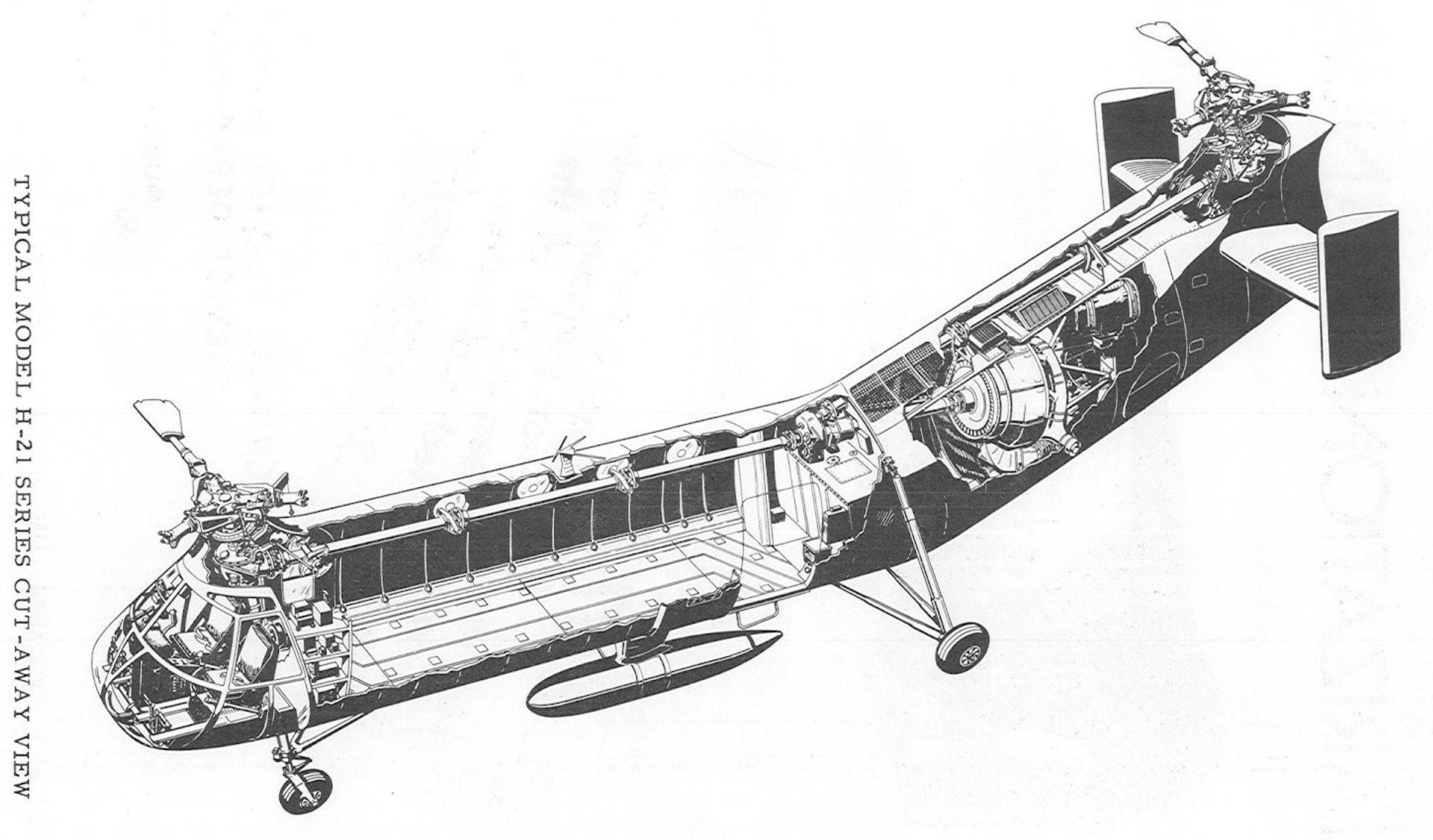
The H-21 was powered by a single air-cooled, supercharged, 1,823.129-cubic-inch-displacement (29.875 liter) Wright Aeronautical Division Cyclone 9 863C9WD1 (R-1820-103) nine-cylinder radial, mounted inside the fuselage at midship, and drove the front and rear rotors in opposite directions through drive shafts and gear boxes. The Wright R-1820-103 engine was rated at 1,275 horsepower at 2,500 r.p.m., and 1,425 horsepower at 2,700 r.p.m., for takeoff. This direct-drive engine had a compression ratio of 6.80:1 and required 100/130 aviation gasoline. The engine was 4 feet, 0.50 inches (1.232 meters) long, 4 feet, 6.95 inches (1.396 meters) in diameter, and weighed 1,350 pounds (612 kilograms). Wright built 971 R-1820-103s from November 1950 through 1957.
The CH-21C had a maximum speed of 127 miles per hour (204 kilometers per hour) and a range of 265 miles (427 kilometers). It’s service ceiling was 19,200 feet (5,852.2 meters).
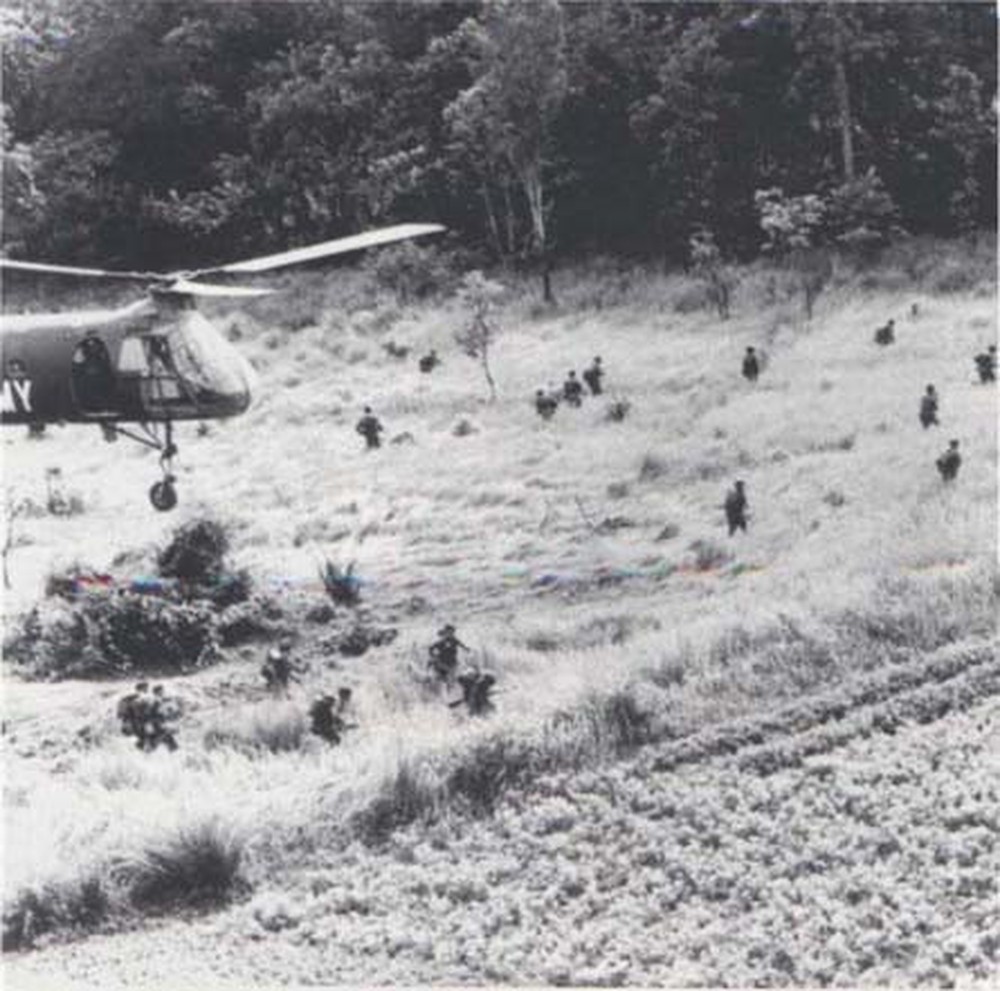
The Piasecki H-21 Workhorse was developed for the U.S. Air Force as an air base support and search and rescue helicopter in cold weather operations. A total of 707 were built for the U.S., France and Germany, as well as civil operators. 334 were built for the U.S. Army as the H-21C Shawnee, redesignated CH-21C in 1962.
Its performance in the hot and humid climate of Southeast Asia was limited, restricting the troop load to 9 soldiers. It was withdrawn from service in 1964 when the Bell HU-1A Iroquois began to replace it. All CH-21Cs were retired when the CH-47 Chinook assumed its role in 1965.
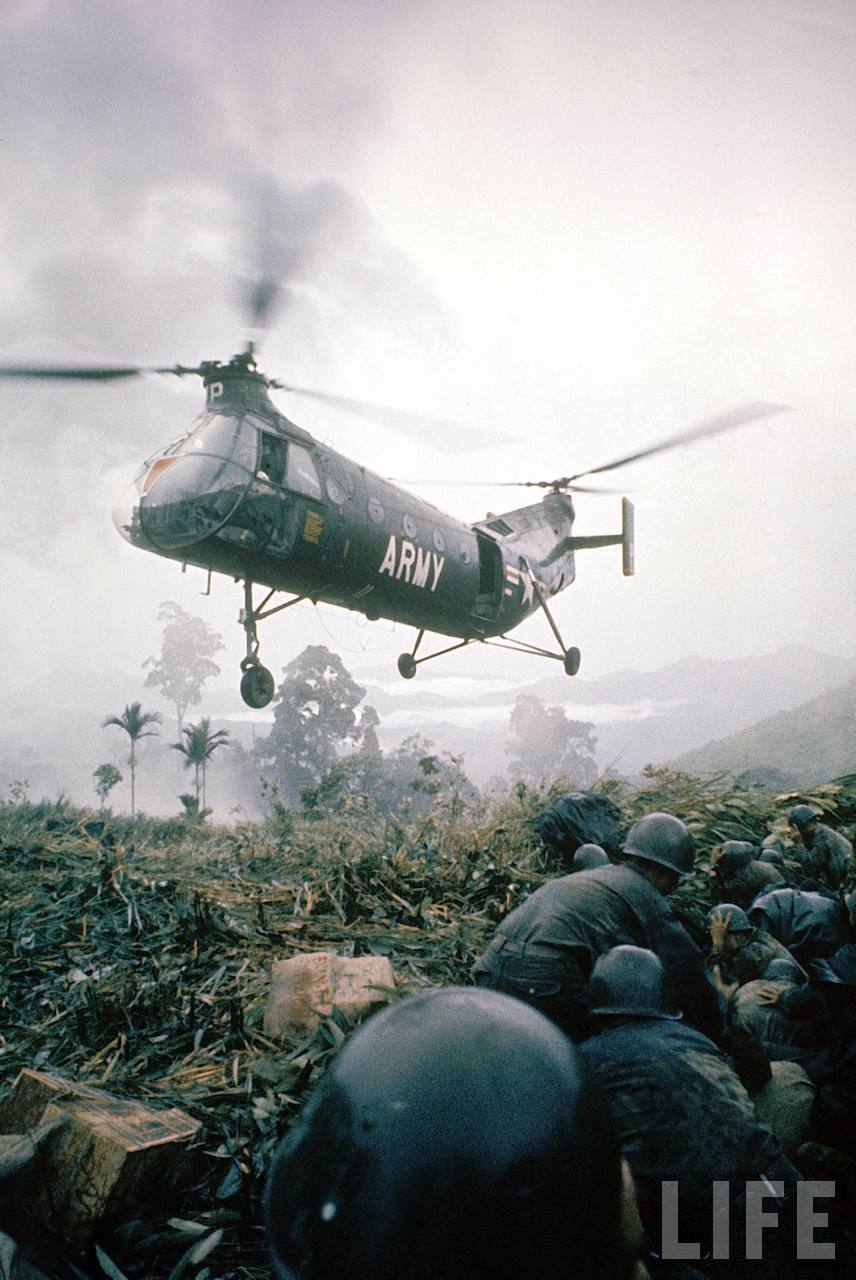
© 2019, Bryan R. Swopes
